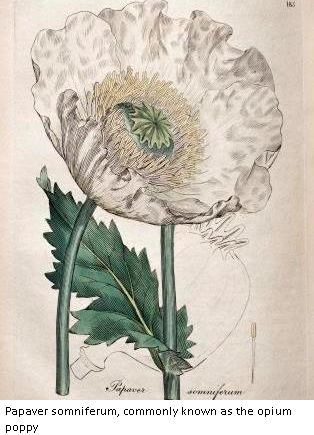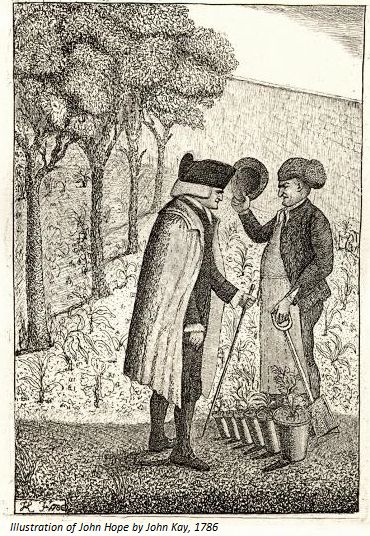Gayfield Square and Haddington Place, to the west of Leith Walk, are now densely built-up areas boasting a large youth hostel and many small cafes and shops alongside residential properties. There is not much in the way of greenery to be seen.
And yet, in 1763, when the new physic garden was taking shape at this spot, there was just a green field, well away from the city centre. For sixty years this location continued the united legacy of the two earlier physic gardens, at Holyrood and Trinity Hospital.
Today, not much remains to tell the story of the medical and botanical history that defined this location.
Early Days
The new physic garden at Leith Walk was established in 1763 and measured five acres. Permanent funding was obtained from the Crown, a feat which was accomplished by the physic gardens’ new champion, Dr John Hope (1725-1786). He became the fourth Regius Keeper after James Sutherland, preparing the grounds for the new physic garden from scratch and managing what must have been a very challenging transfer of plants and collections from two sites to the new one.
The Gardener's Cottage
At this location, it was not so much green space that was lacking - as had been the problem previously when the physic gardens were still located in the Old Town. Instead, it was buildings that were in short supply, especially for accommodating the head gardener and medical students for lectures.
Therefore, a small house was designed by two highly regarded architects, John Adam and James Craig. It was finished towards the end of 1765 and the beginning of 1766.
The cottage served as the main entrance to the garden, and had a classroom which accomodated students who studied medical botany as part of Medicine in Edinburgh at the height of the Scottish Enlightenment until the physic garden’s final relocation in the 1820s. Students taught in the building included Benjamin Rush, one of the United States’ founding fathers, and Thomas Charles Hope, who discovered the element strontium and tutored Charles Darwin.
The Final Move
After its final move, from the 1820s onwards, the physic garden went from strength to strength in its new location in Inverleith Row and became what is now the internationally renowned Royal Botanic Garden Edinburgh.
But the beautiful and historically important gardener’s cottage experienced quite a different fate when left behind after the relocation. A private home at first, it was turned into a commercial property, including being an office for van rentals. In very bad repair, and sunken into the ground as the street level around it had been raised, its past had almost been obliterated. By the early 2000s it was empty, and had been set on fire.
It was in danger of being completely demolished when an extraordinary rescue took place in 2008. It was moved, stone by stone, to Inverleith Row, to be rebuilt to its former glory. And, more importantly, it was reunited with the one-time physic garden whose entrance it had guarded.





